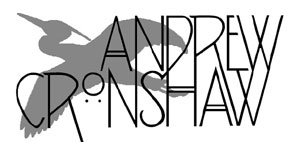
- Andrew Cronshaw website -
- Andrew Cronshaw MySpace -
- Cloud Valley Music website -
- Andrew Cronshaw website -
- Andrew Cronshaw MySpace -
- Back to Reviews Introduction page -
Written in
fRoots
issue 218/219, 2001
HENRIQUE OTERO
O Gaiteiro Do Fragoso
Boa Do Fol 10002026 (2001)
RODRIGO ROMANÍ
Albeida
Boa Do Fol 10002023 (2000)
OS CEMPÉS
Circo Montecuruto
Boa Do Fol 10002022 (2000)
It is, perhaps, a sign of potency in a musical tradition when those who have
nurtured it through the thin times feel empowered and sufficiently confident of
its health to cell-divide into new diversity. That’s what seems to be happening
in the current phase of Galicia’s roots music boom. For example, here are three
albums, wrought by some of those resolute musicians, differing widely in sound
but all distinctively Galician.
Henrique Otero, the Piper of Fragoso, now 71,
hasn’t just been a key musician in the carrying of the Galician gaita tradition
through its waning times during the second half of the 20th century as a very
skilful gaiteiro playing in Vigo’s municipal band, founding the traditional
gaita-and-percussion quintet Os Cruceiros, teaching including pioneering a gaita
course at Vigo Conservatoire and writing a gaita tutor, but he has composed a
lot of fine tunes. O Gaiteiro Do Fragoso consists some of them, written
between 1971 and 1999, played with total authority and undiminished dexterity by
Otero, energetically accompanied in traditional style by shells, tarrañolas,
spoons, side drum and bass drum played by the group Noitarega, and, for a song
performed by Beatriz Riobó, by harmonium.
Otero’s tunes - muiñeiras, xotas, alboradas, a
fandango, a rumba, an incorporation of the foreign form of a polka - are full of
joyful exuberance, hummable snatches and interesting tricky corners. They’re
classics, the raw data of the living Galician gaita tradition, exemplifying its
difference in rhythmic and melodic shape from the musics of Ireland, Scotland or
Brittany, and this is a splendid album of great playing and spirited music
recommended to anyone who wants to get a sense of the heartbeat of Galician
instrumental music’s current boom.
A musician leaving a famous band after many years
sometimes comes up with an over-manned, studio-tanned solo debut, but harpist,
guitarist and citole-player Rodrigo Romaní’s first solo album since leaving
Milladoiro, which he co-founded in the 1970s, is a relaxed, varied work full of
the liveliness, shapes and textures but not necessarily the approaches of
tradition, and of course he takes the opportunity to try some things that
wouldn’t have fitted with Milladoiro.
The melodic material is partly traditional and
partly written by Romaní, and there are songs, settings of various writers’
lyrics sung by himself, Mercedes Arribe or Cuban Alain Pérez. He appears a
modest, generous performer, welcoming musical friends, letting them do what they
do best or bringing them together in combinations that interest him, but they
are genuine musical friends, not star-studding. Among them are Susana Seivane, a
musician who Romaní has helped a great deal and whose album he produced,
Berrogüetto’s Anxo Pintos on hurdy-gurdy and sax, and the gaitas and traditional
percussionists of Treixadura. The core line-up includes accordionist César
Longa, former Milladoiro violinist Laura Quintillán with Kim García’s bass and
Fernando Llorca’s drums. A couple of tracks involve the Vigo Chamber Orchestra
in a non-slushy way, and for the finale he duets on harp with the City of Prague
Philharmonic Orchestra in a predominantly reflective piece built on Galician
processional marches.
Sometimes overlooked when leading Galician bands
are mentioned is Os Cempés, from Ferrol, partly because they haven’t done much
touring abroad. Their albums have the energy and pace of the traditional gaita
bands while utilising voices, accordion, gaita, soprano sax, clarinet,
hurdy-gurdy and drums rather like an updated version of the village dance bands
that combined the likes of accordion and clarinet with gaita. For this one Serxo
Cés, Antón Varela, Oscar Fernández Sanjurjo and Toni do Jaz are joined by guest
bassists, a brass trio, string sextet, and others including violinist Pancho
Álvarez, Chouteira singer Uxía Pedreira, and on harp Berrogüetto’s Quico
Comesaña. Circo Montecuruto gets its name and design theme from the title
of its opening tune, but there’s a circus-like exuberance throughout its
mazurkas, pasodobles, jota, songs and other material, traditional and new-made.
The final track contrasts with the preceding fun; musically it’s a lively pair
of tunes led by hurdy-gurdy and clarinet, but they are preceded and followed by
the disturbing sounds of an ugly confrontation in 1999 between Spanish law
enforcers and people demonstrating for the right to earn a living from the sea
in the fishing village of Cedeira.
© 2000
Andrew Cronshaw
You're welcome to quote from reviews on this site, but please credit the writer
and fRoots.
Links:
fRoots - The feature and
review-packed UK-based monthly world roots music magazine in which these reviews
were published, and by whose permission they're reproduced here.
It's not practical to give, and keep up to date,
current contact details and sales sources for all the artists and labels in
these reviews, but try Googling for them, and where possible buy direct from the
artists.
CDRoots.com in the USA, run by
Cliff Furnald, is a reliable and independent online retail source, with reviews,
of many of the CDs in these reviews; it's connected to his excellent online magazine
Rootsworld.com
For more reviews click on the regions below
NORDIC
BALTIC
IBERIA (& islands)
CENTRAL & EASTERN EUROPE, & CAUCASUS
OTHER EUROPEAN AMERICAS OTHER, AND WORLD IN GENERAL
- Back to Reviews Introduction page -